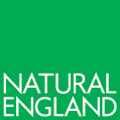Summary of badger vaccination in 2019
Published 27 March 2020
Applies to England
Background
The government’s strategy[footnote 1] on tackling bovine tuberculosis in England includes badger vaccination.
As the licensing authority, Natural England issue licences under the Protection of Badgers Act 1992 to take and mark badgers for vaccination to prevent the spread of bovine tuberculosis in cattle.
Licence holders must have the permission of the landholder where they propose to vaccinate badgers. Before individuals can set cage-traps or vaccinate badgers, they must also prove to Natural England that they have completed the relevant training[footnote 2].
Number of badgers vaccinated in England in 2019
The open season for vaccinating badgers runs each year from 1 May to 30 November.
Licence holders must submit to Natural England an annual return of the number of badgers vaccinated during the open season.
In 2019, licence holders vaccinated 890[footnote 3] badgers across England.
| County | Licenced area (km2) | Badgers vaccinated |
|---|---|---|
| Avon | 2.6 | 22 |
| Berkshire | 12.0 | 22 |
| Cheshire | 38.3 | 135 |
| Cornwall | 33.5 | 159 |
| Derbyshire | 57.1 | 155 |
| Devon | 3.9 | 34 |
| Dorset | 6.6 | 66 |
| East Sussex | 3.2 | 20 |
| Gloucestershire | 2.8 | 58 |
| Greater Manchester | 0.5 | 3 |
| Hampshire | 1.7 | 0 |
| Hereford and Worcester | 2.8 | 27 |
| Leicestershire | 15.1 | 34 |
| Nottinghamshire | 9.3 | 30 |
| Oxfordshire | 7.6 | 23 |
| Shropshire | 4.6 | 26 |
| Somerset | 5.7 | 12 |
| Staffordshire | 13.2 | 33 |
| Warwickshire | 1.3 | 20 |
| Wiltshire | 6.3 | 11 |
Field monitoring
Cage-trapping is a long established method of catching badgers and the welfare of badgers captured in cage-traps has been investigated before[footnote 4].
In 2019, Natural England conducted compliance monitoring visits on 7 (3.5 %[footnote 5]) individual authorised to cage-trap and vaccinate badgers. All exhibited a high level of compliance with licence conditions and best practice.
-
https://www.gov.uk/government/publications/a-strategy-for-achieving-officially-bovine-tuberculosis-free-status-for-england. ↩
-
https://www.gov.uk/guidance/bovine-tb-badger-vaccination-training. ↩
-
Based on a preliminary analysis of the return forms submitted to Natural England in December 2019. ↩
-
Woodroffe, R, Bourne, FJ, Cox, DR, Donnelly, CA, Gettinby, G, McInerney, JP, and Morrison, WI (2005) ‘Welfare of badgers (Meles meles) subjected to culling: patterns of trap-related injury’, Animal Welfare, 14 (1), pp. 11-17. ↩
-
Based on the number of compliance visits conducted as a proportion of the total number of licensed individuals. ↩

